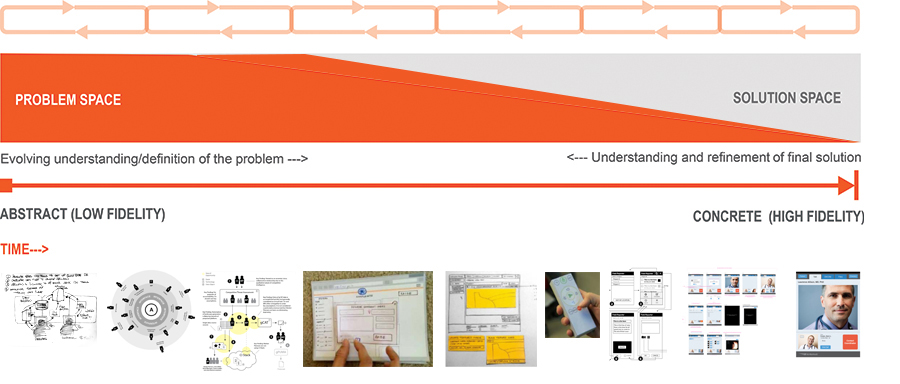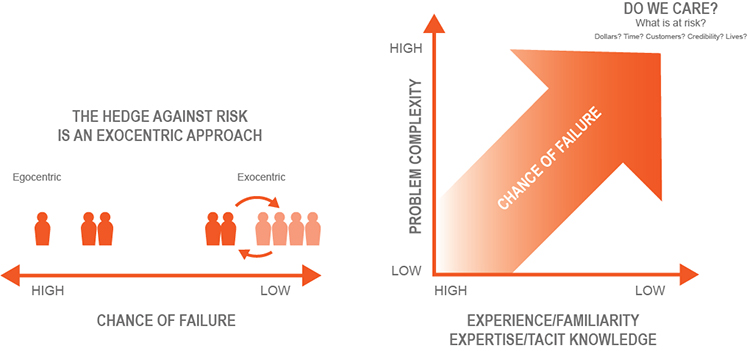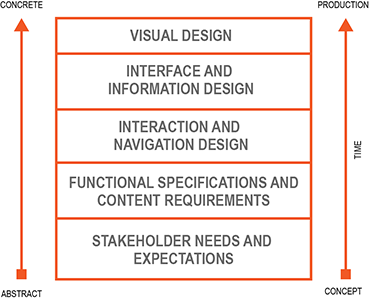
|

|
Back
|
When discussing a possible engagement, we often turn to 4 simple diagrams that say a lot about how we think:

|
1. The Human-Centered Design Model (derivative of ISO 9241-210)

This diagram illustrates a recursive, evidence-based, human-centered, design cycle that includes a pattern of divergent and convergent thought. We take all or part of a problem and learn as much as we can about it. We then make an educated guess as to how it might be solved. We create something tangible that can be evaluated, and we use what we learn to contribute to our understanding of the problem and/or in evaluation of a proposed solution. Divergence is forced through a solution space policy requiring us to evaluate multiple alternatives (innovation occurs only when we begin to exhaust the obvious possibilities).
2. Problem Space v. Solution Space

Our recursive loop is applied along a continuum. In the beginning, our work is all about really understanding the problem, and what we are testing against human stakeholders is that deeper understanding. Over time, we begin to alternate between testing understanding and evaluating possible solutions. Only at the very end of the process are we working exclusively in the solution space. We do much of our early work with abstract models and low-fidelity prototypes. Sometimes we're looking at months of work, but often the additional time that it takes to explore a problem (or part of a problem) and validate possible solutions can be measured in days, if not hours.
3. Strategy and the Cost of Failure

Determining the appropriate design strategy, for addressing all or part of a problem, is a matter of return on investment (ROI). ROI can not be determined until we understand the cost of failure. What is at risk if we don't get this right? Dollars? Customers? Credibility? Lives? Or not much? One thing is for certain: It usually costs a lot less to fail early—before the product is produced—than in the marketplace.
4. A Layer Cake

This model, first introduced by Jessie James Garret, does a good job of illustrating the relationship of visual design to the overall effort—and it is just as applicable to the design of products and communications as it is to software. This said, visual design is still a critically important consideration. Ninty percent of perception is visual—what people see plays an oversized role in shaping expectations. It's just not the right place to start. In our experience, when the conversation becomes focused on how something looks, everything else is out the door. It is an important conversation to have, but it is equally important to put it off until the larger considerations have been thoroughly investigated.
|

|

|
Back
|

|

